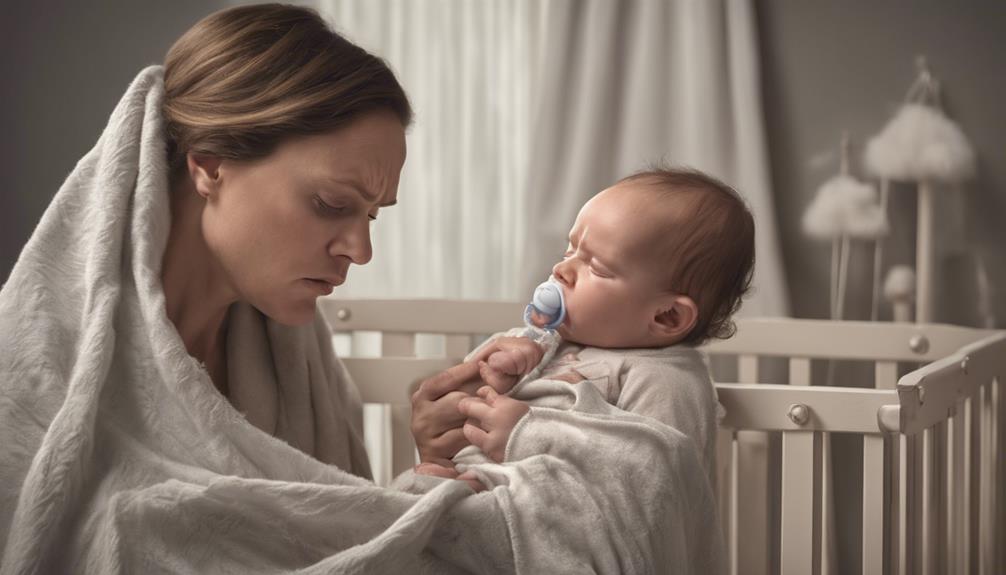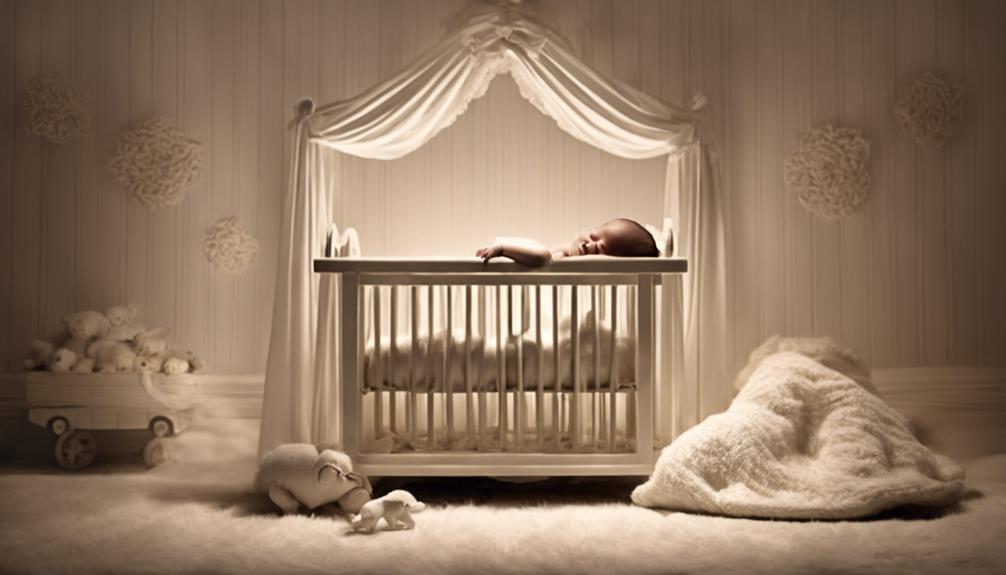As parents, we've all experienced the struggle of soothing a newborn who insists on sleeping only in our arms. The challenge of getting them to settle in their crib can be overwhelming, but understanding the reasons behind this preference is critical.
From exploring the science of infant sleep patterns to practical tips for a seamless change, the journey to helping your little one find comfort in their crib is a multifaceted one. The key lies in recognizing and addressing their unique needs while fostering a safe and peaceful sleep environment that promotes independence.
Key Takeaways
- Establish a consistent sleep routine to encourage independent rest in the crib.
- Use swaddling and white noise techniques to create a soothing sleep environment.
- Transition the baby to the crib gradually while offering comfort and reassurance.
- Avoid safety risks by following recommended guidelines for safe sleep practices.
Reasons for Baby Preferring Arms Over Crib
When babies prefer being held over sleeping in their crib, it's often because the familiar sensations of warmth, movement, and sound mimic the comforting environment of the womb. As newborns in the fourth trimester, babies seek closeness for comfort and security, finding solace in the embrace of their caregivers' arms. The change from the womb to the outside world can be overwhelming, and the need for constant closeness is natural. Understanding that babies may not learn to sleep independently if always held, leading to a reliance on parental comfort for rest.
Creating positive sleep associations in the crib can help babies shift from being held to sleeping independently. By incorporating elements like familiar blankets, soothing music, or a parent's worn shirt that carries their scent, the crib can become a place of comfort and security. Acknowledging your baby's need for closeness while gently encouraging independent sleep is key to establishing healthy sleep habits for both the baby and the parents.
Safety Concerns About Sleeping in Arms

To guarantee the safety of newborns and minimize the risk of Sudden Infant Death Syndrome (SIDS), it's advised to avoid sleeping with the baby in our arms and instead provide a separate sleeping space like a crib or bassinet. While it may feel comforting to have your baby close, the safest place for them to sleep is on their back in a crib or bassinet. Here are some reasons why it's safer for babies to sleep in their own space:
- Co-sleeping on couches or adult beds increases the risk of SIDS.
- Falling asleep with a baby on your body poses risks like the baby falling off.
- The American Academy of Pediatrics advises against bed sharing under any circumstances.
- Keeping the baby in the same room for the first six months is recommended.
Ensuring your baby sleeps in a safe and secure environment not only reduces the risk of SIDS but also helps them develop healthy sleep habits. By creating a calm and soothing sleep space, babies can fall asleep faster, stay asleep longer, and wake up feeling refreshed. Remember, your baby's safety is a top priority. *Medical Review* has shown that placing babies in a crib or bassinet can provide the ideal sleeping environment for their well-being.
Tips to Transition Baby to Crib
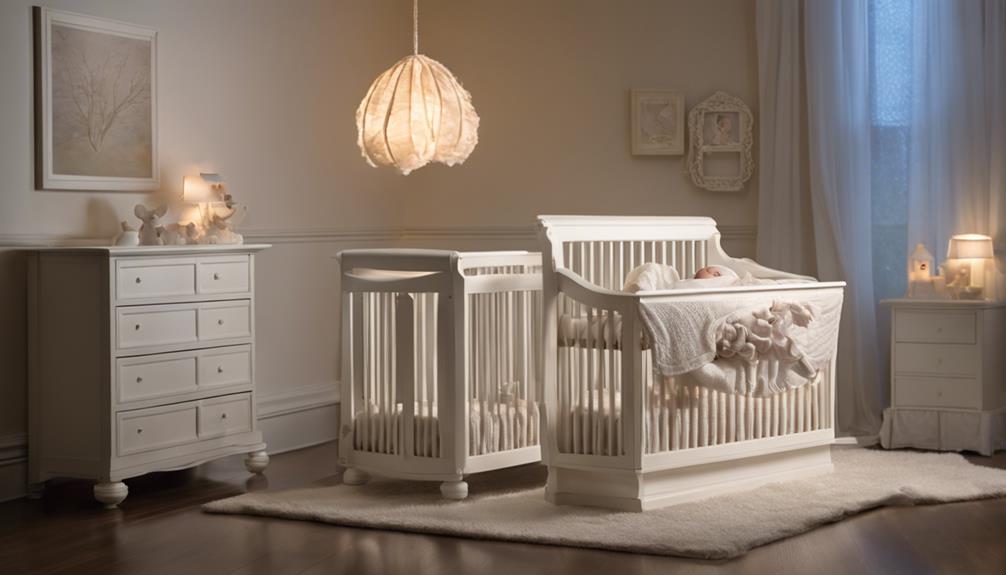
Shifting your baby to the crib can be a gradual process that involves introducing them to the new sleep environment while they're drowsy but awake for one nap a day. By laying your baby down awake in the crib, you can help them learn to self-soothe and fall asleep without needing to be held. Adjusting the order of naptime events can also assist in encouraging independent sleep and making the shift to crib sleeping smoother.
Offer gentle movements and reassurance like holding their hand or placing a palm on their chest to comfort your baby during this change. Patience is key as your little one learns to sleep independently in the crib. Celebrate small victories along the way to keep both you and your baby motivated.
Understanding your baby's wake patterns and incorporating them into a consistent bedtime routine can also help them stay asleep in the crib instead of needing to sleep in your arms.
Establishing Sleep Routine for Newborn
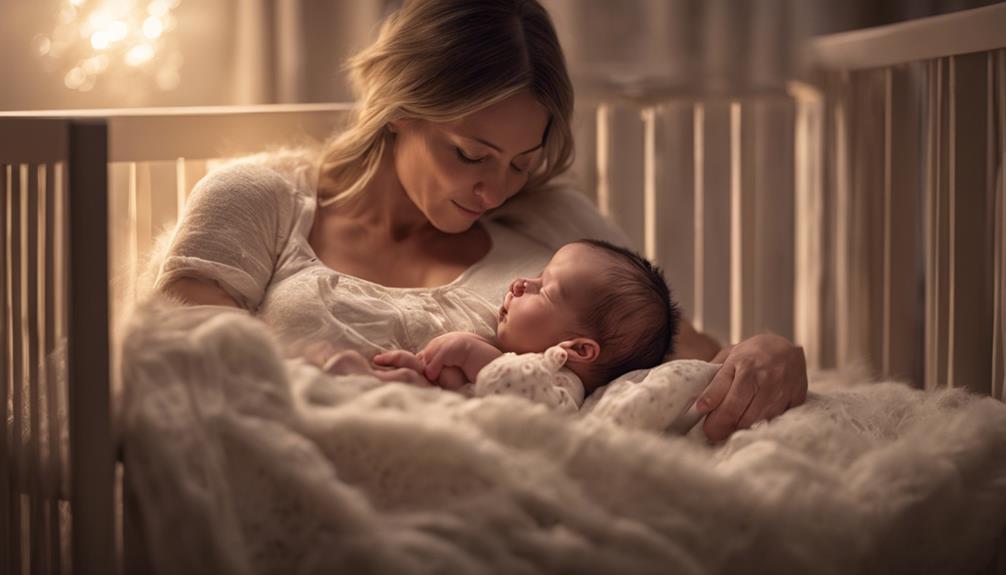
Moving your newborn to their crib can be a comforting and positive experience by establishing a consistent sleep routine that promotes independent rest. Here are some practical tips to help you create a soothing sleep environment for your little one:
- Create Positive Associations: Engage your newborn in activities like singing, smiling, and playing in the crib during awake times to make it a warm and inviting space for them.
- Rule Out Feeding Issues: Make sure your newborn is comfortable and well-fed before nap time to support a peaceful shift to sleep.
- Support Falling Asleep Comfortably: Help your newborn settle down by providing gentle comfort and reassurance as they drift off to sleep.
- Manage Awake Time: Be mindful of your newborn's awake time to prevent overtiredness, which can make it harder for them to fall asleep independently.
Using Swaddling and White Noise Techniques
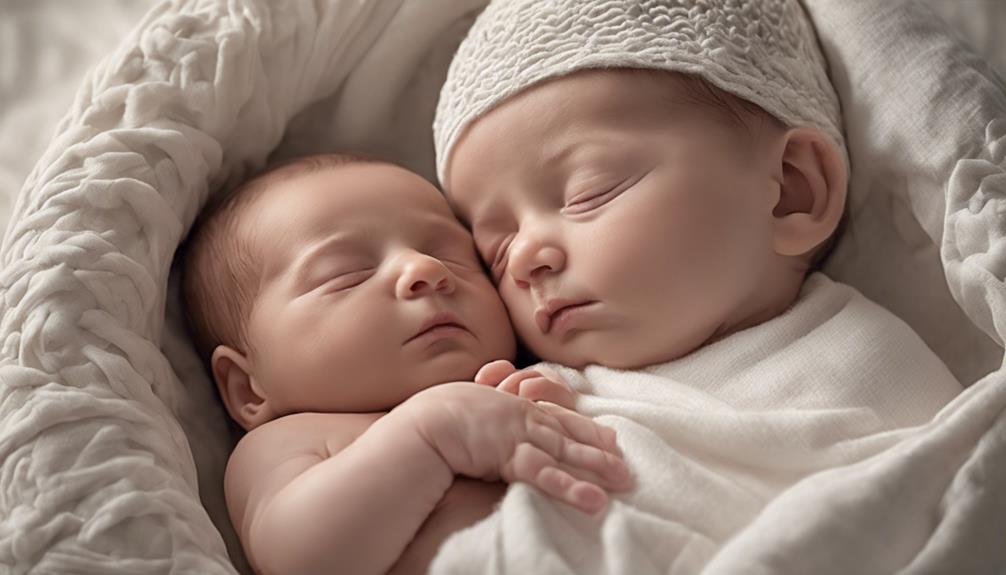
Swaddling and using white noise are effective techniques to help your newborn settle and sleep soundly in their crib, creating a cozy and peaceful atmosphere conducive to rest.
Swaddling provides a secure feeling for your baby, reminiscent of the womb, which can promote better sleep in the crib by preventing the startle reflex and allowing for uninterrupted sleep.
When combined with white noise during bedtime routines, such as gentle sounds of nature or a calming hum, these techniques can work together to create a soothing ambiance that helps babies fall asleep faster and stay asleep longer.
The white noise also masks background sounds that might otherwise disturb your little one's slumber, ensuring a tranquil environment for crib sleep.
Conclusion
To sum up, helping your newborn shift from sleeping in your arms to sleeping in the crib can be a challenging but rewarding process. Remember, Rome wasn't constructed in a day, so be patient and consistent in your efforts.
By following the tips and techniques outlined in this article, you can create a safe and comforting sleep environment for your little one. So, take it one step at a time, and before you know it, your baby will be peacefully sleeping in their crib.



